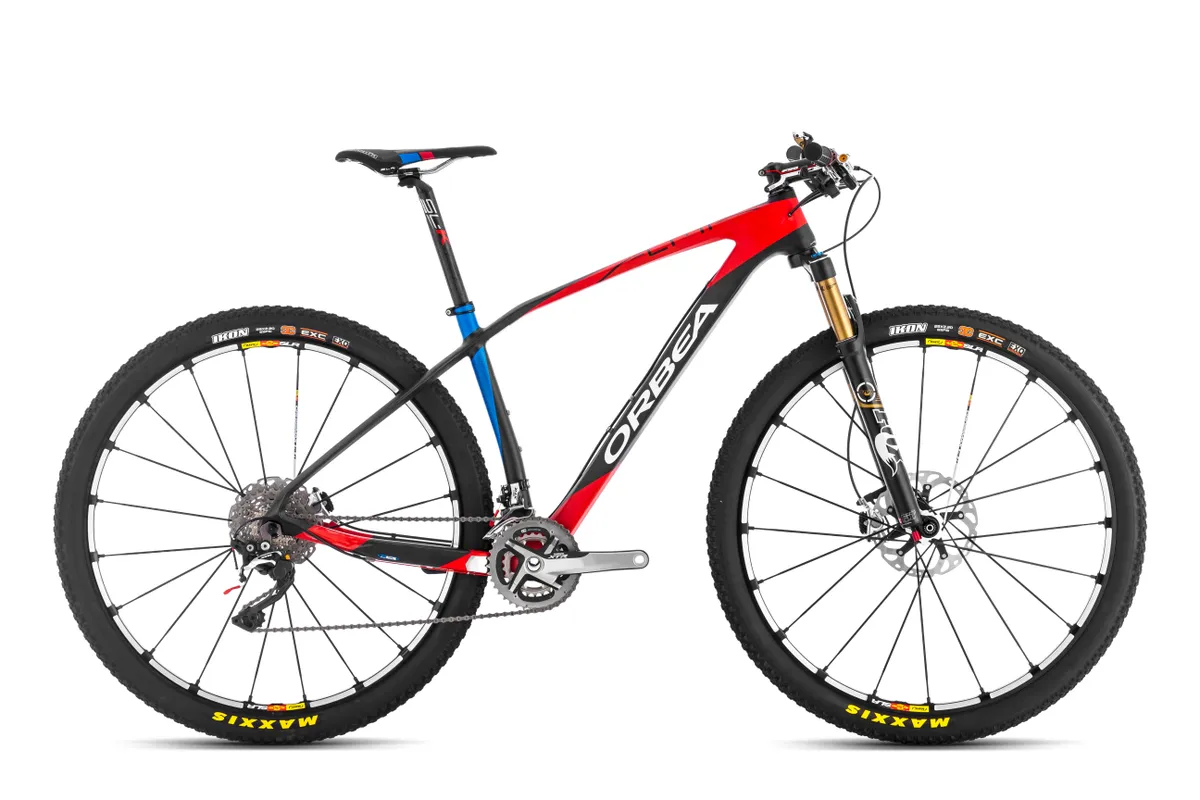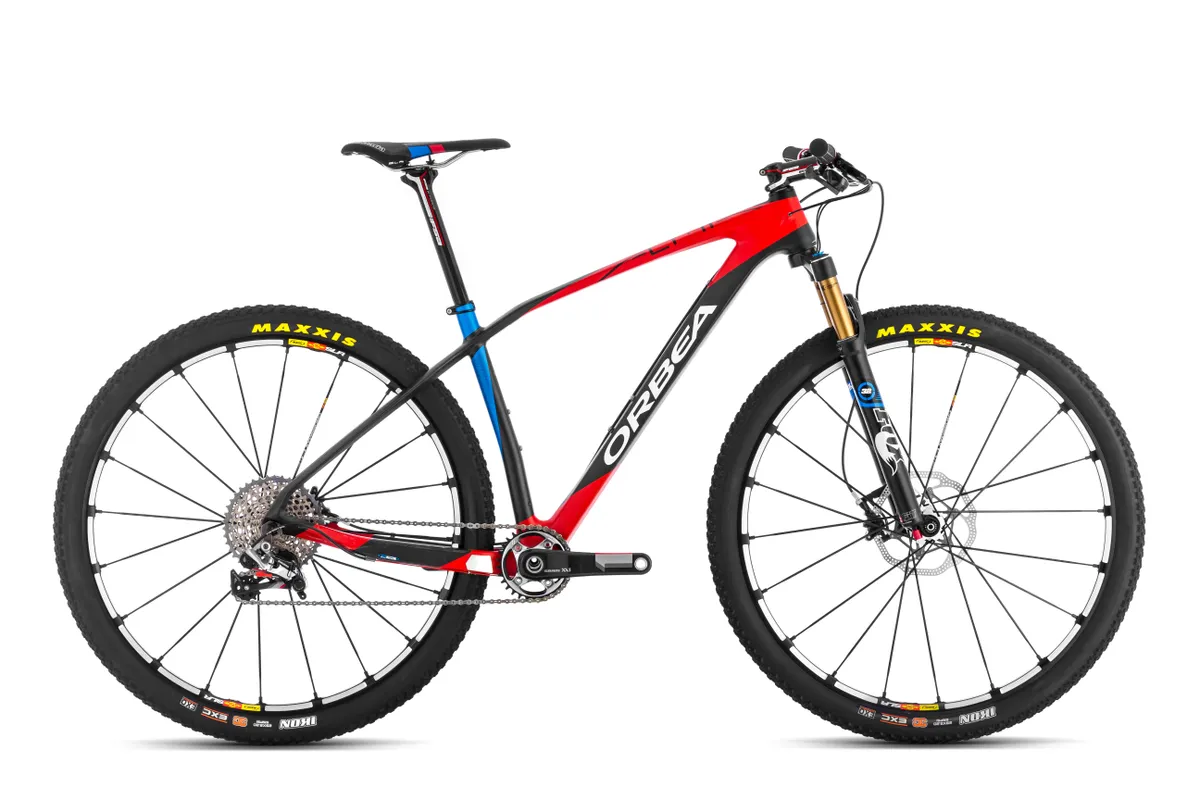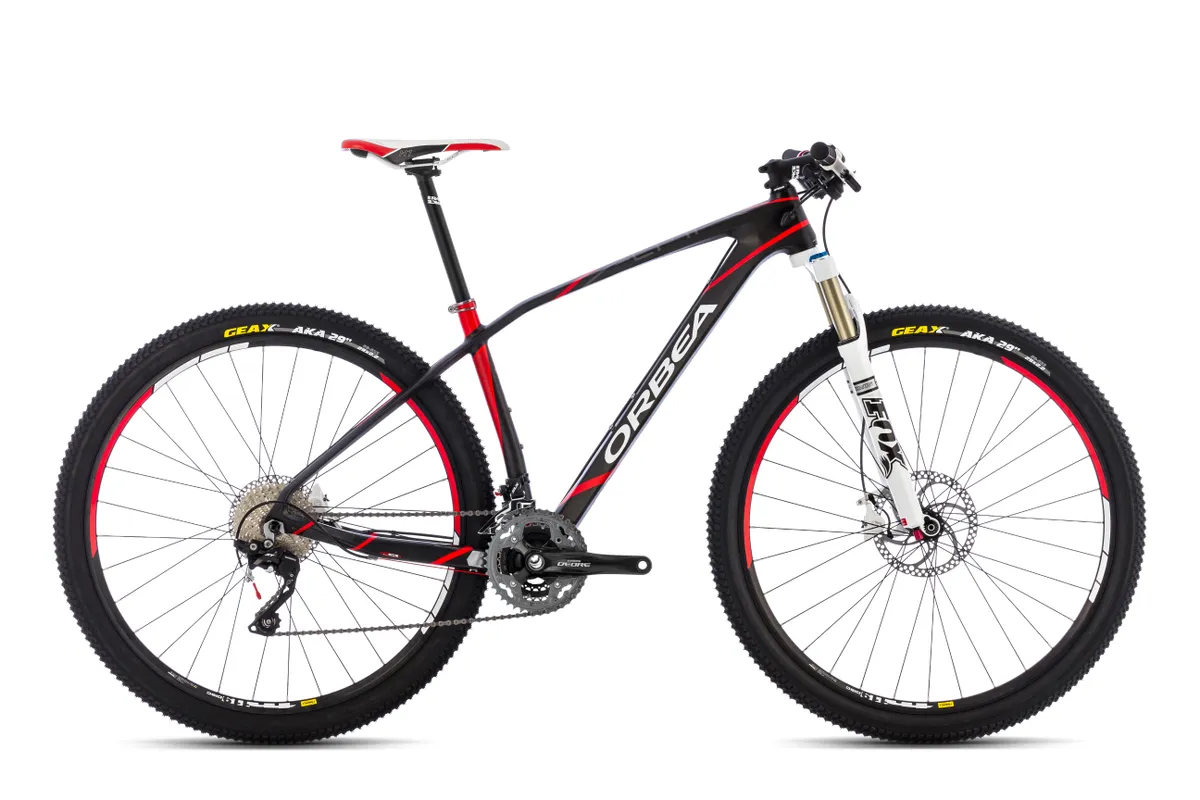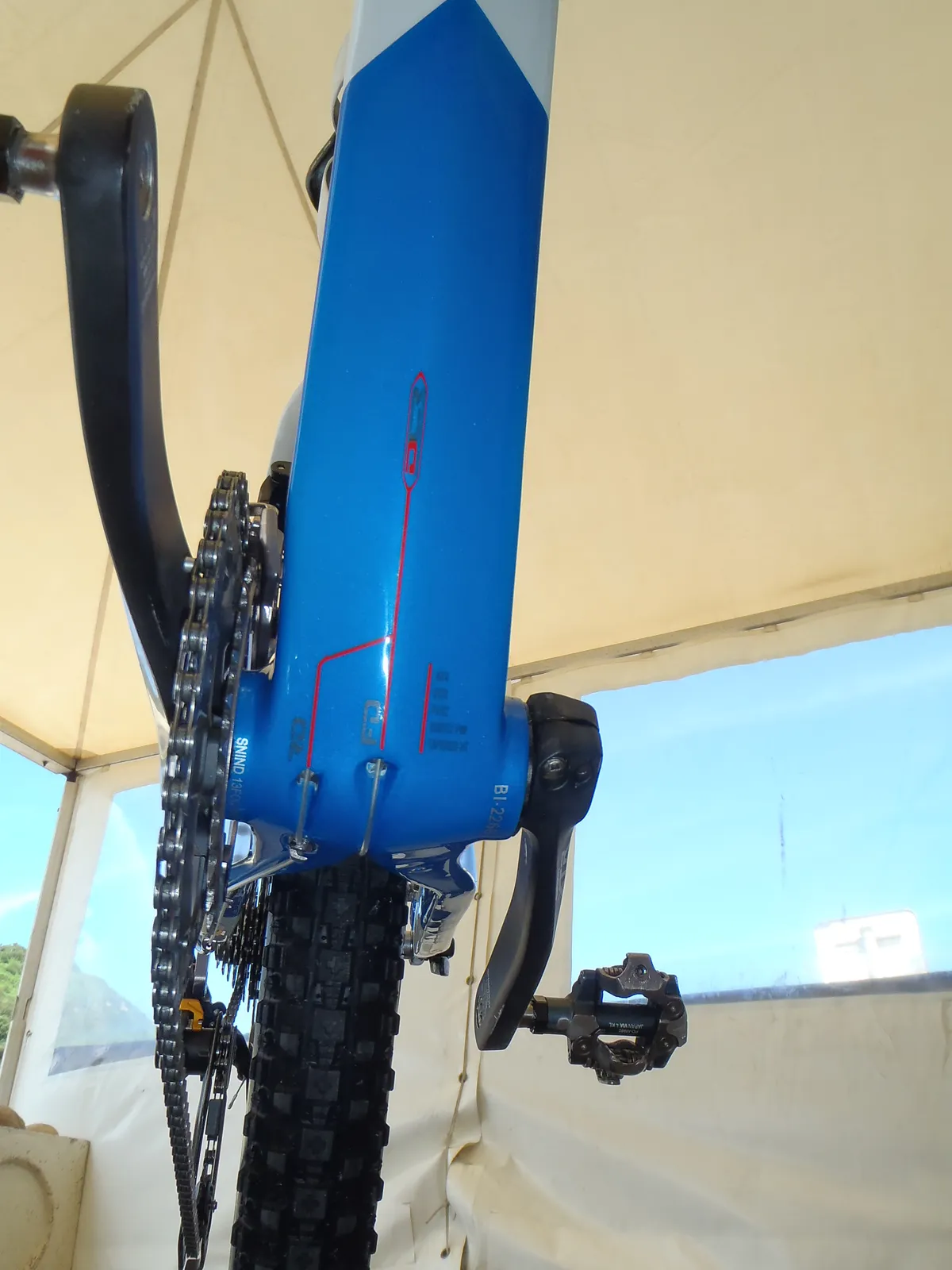BikeRadar recently popped out to the Basque Country to try out the evolved Orbea Alma cross-country race bike in 29er and 650b flavours and two different grades of carbon. The Alma has been around since 2006 and has taken Julien Absalon to World Cup wins and US rider Georgina Gould to a 2012 Olympic bronze medal.
In a bid to match wheel formats to the right frame size, Orbea have split the Alma into two camps for 2014 – 29er and 650b. Testing and rider feedback suggested that on smaller frames a 29in wheel incurs too many compromises, especially in terms of front end height and toe overlap. So, small frames will be offered with 650b (27.5in) wheels, medium frames with the option to run 27.5in or 29in wheels, and large and XL frames as 29er only.
We spent most of our time on the M Team 29er (also available in 650b), so this review is based on that bike.
Ride & handling: Climbs and descends well
During the press camp we were given the opportunity to ride the 2011 Alma before jumping on the new one to see what changes and improvements have been made.
On the face of it, the Alma is very much an XC race bike. Three things stood out comparing the old with the new, though – climbing prowess, descending confidence and comfort.
Orbea have attacked climbing performance in a number of ways, in addition to the usual ‘lighter and stiffer’ approach. Firstly, reach has increased by 40mm for the large frame, shifting weight further forwards on the bike. Simultaneously, the front end has been dropped, partly thanks to a head tube that’s 15mm shorter. This lowers the centre of gravity, increasing stability and preventing the front wheel wandering.
A steeper seat tube also helps shift weight forward, which has positive effects knock-on effects on power output. Finally, the chainstays have been shortened while maintaining mud clearance – this helps you maneuver the bike on technical climbs.
We covered a range of steep climbs with terrain including tarmac, loose fireroad and technical singletrack. On each ascent the new Alma performed better, with increased traction despite us being able to get our weight further forward.
Cross-country race bikes don’t have the greatest reputation when it comes to descending, but we were able to throw the M Team down some pretty serious singletrack to try it out.

Orbea Alma M Team
Compared to the older Alma, the 2014 bike has a more relaxed head angle, shorter chainstays and a shorter head tube. The slacker head angle improves high speed control, making the bike less skittish and more confident, especially when the trail becomes steeper. Meanwhile, the shorter chainstays improve the bike’s ability in tight sections, as the back end is more nimble.
Lowering the front end has improved traction for the front wheel – a section of the trail we rode included some slippery rock up-and-overs, which were far easier on the new Alma than the old.
Thanks to these changes, the Alma descends relatively confidently for a race bike – fast and flowing trails were a lot of fun, and when things got a little more involved it behaved competently rather than nervously. With a slightly longer fork and wider bar it would be a pretty capable fast trail bike.
Frame & equipment: 4X4 comfort technology with XC stiffness
As we’ve said, the Alma is a 100mm cross-country carbon race bike and, as such, is long, low, stiff and nimble. One of Orbea’s main claims is that they’ve managed to improve comfort by 211 percent over the 2014 Alma's predecessor.
There’s a lot of subjectivity involved in rating comfort, a lot of which comes down to contact points, wheels and tyres. However by attaching the frame to various testing rigs, 211 percent is the precise figure they’ve come to.
The improvement is said to be down to their ‘4X4’ technology, visible in the kinked top tube and seatstays. Orbea say the four-point rear triangle increases the amount of tube surface on the inside of the frame triangles by 15 percent, increasing stiffness but also changing the flex characteristics and improving vertical impact absorption.

There's plenty of mud room around the rear wheel of the Alma
The Alma is still a stiff XC race bike but the new bike felt a little smoother on rough terrain the 2011 version. It was hard to confirm or deny whether the 4X4 design was the reason for this – the 2014 bike has different tyres and wheels.
As per many bikes these days, the 2014 Alma features a tapered head tube, direct mount rear mech and PF92 bottom bracket. The frame has internal cable routing, with a fully lined system designed to improve durability. The Alma also comes ready to take electronic groupsets, based around a battery in the seat tube as is popular on road bikes.





